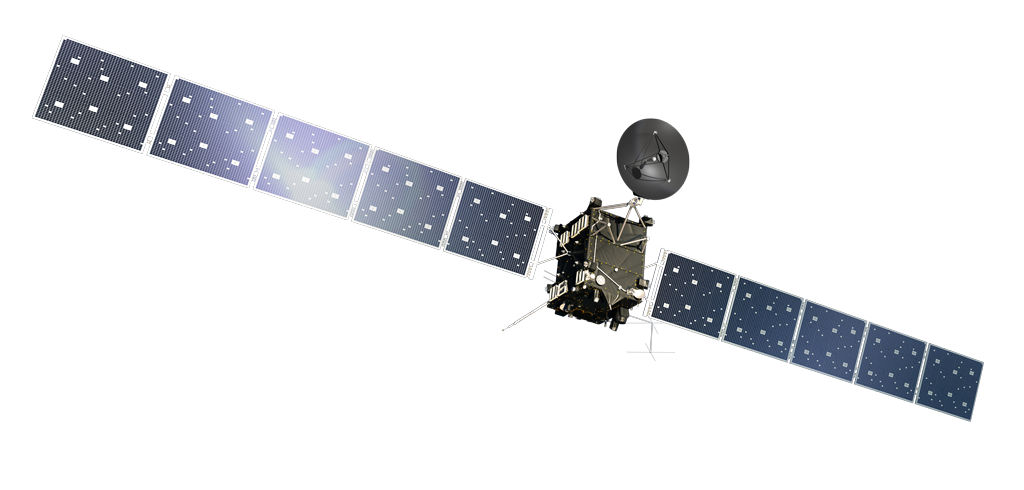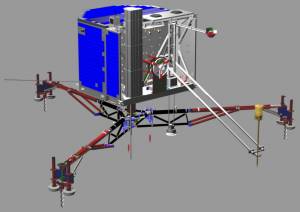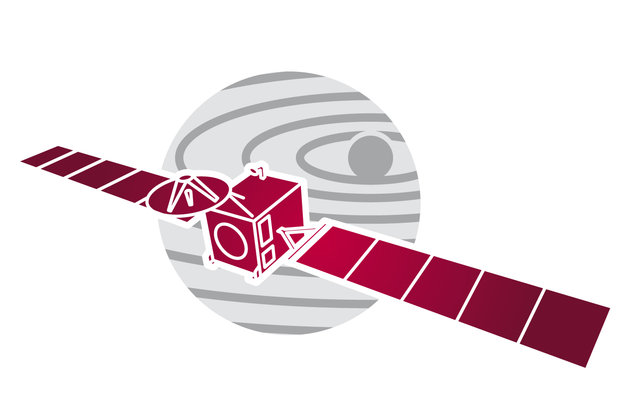In my last blog post (“Coming out of the cold”) I talked a bit about how the Rosetta spacecraft, still slumbering in deep space hibernation, will wake up. It’s a relatively well-known spacecraft, having been launched in 2004. Although we haven’t heard from her in two and a half years, everyone has high hopes that she’ll wake up on schedule and make contact.
Tag Archives: ESA
“Wake up, Rosetta!” – coming out of the cold
It’s been a cold couple of years for Rosetta – launched in 2004, the ESA satellite has been racing around the Solar System in every increasing circles, gaining energy and speed from gravity assist flybys of the Earth (3 times!) and Mars. ESA recently produced a nice animation showing the entire 12-year journey:
[youtube2]https://www.youtube.com/watch?v=iEQuE5N3rwQ[/youtube2]
As you can see, during the time that Rosetta has been flying, her target comet 67P/Churyumov–Gerasimenko (“Chury” to its friends) already made one close passage through the Solar System (67P has an orbital period of six and a half years). But in orbital mechanics, being in the right place at the right time isn’t enough – you also have to be travelling with the right speed. All previous comet missions were flybys. In a flyby the comet and spacecraft are in the right place, at the right time, but have very different velocities. Because of this they are close to each other for a scant few hours and observe the comet nucleus for only a fraction of its passage through the Solar System. Rosetta is something completely new – a comet rendezvous mission; Rosetta will catch up with comet 67P and stay with it for as long as possible, hopefully more than a year. This means we will be able to study the comet through a large part of its orbit – or at least the interesting bit, when it is close to the Sun! But to do this, Rosetta had to spend a decade playing interplanetary billiards to reach the right point, at the right time, and with the right velocity.

Rosetta has specially developed, and rather large, solar panels (as seen in the picture above) to power it during its voyage. Even so, Rosetta was so far from the Sun during the final outbound loop of its journey that she didn’t receive enough precious sunlight to keep everything switched on – so she entered the long sleep of Deep Space Hibernation (DSH).
In this phase almost everything on-board was switched off – all of the instruments, attitude and propulsion control, the navigation cameras, communications… pretty much everything. The only subsystems left on were the main computer, counting down the days, and some heaters.
Up until this point, Rosetta was in regular contact with the ground controllers at ESA’s mission control centre ESOC, but since the probe entered hibernation in June 2011 we haven’t heard a peep. That should, however, change on January 20th 2014. At 10:00 UTC the countdown will hit zero and the on-board computer should start a series of events to wake up the spacecraft, point it to the Earth and let us know how she’s doing. After so long in the cold, the first thing Rosetta has to do is warm up vital systems – firstly the star trackers. These are cameras specifically designed to take pictures of the stars and figure out where the spacecraft is pointing. Rosetta can then use this information to stop the slow spin that she has been in for the last 2 years and eventually point the spacecraft towards the Earth. The full sequence is shown in the following animation:
[youtube2]UqcDtRmJbKY[/youtube2]
It’s worth remembering that, until this whole sequence of events has played out, we have almost no chance of hearing anything from Rosetta. So even though the alarm clock goes off at 10:00 UTC, we won’t hear anything until about 17:45 UTC. And even this time is not certain. Unlike most events in space that are planned to the second, we don’t know exactly how cold Rosetta will be, how much power will be available and how long the warm-up will take. But, all being well on the evening of 20th January, Rosetta will wake up. The official announcement will arrive via the @ESA_Rosetta Twitter account – so follow it now if you haven’t already!
ESA have also planned a neat social media campaign using the hashtag #WakeUpRosetta. I’ll write some more about this later, but for now leave you with a great cartoon summary of Rosetta – the story so far…
[youtube2]trljrwTbr4w[/youtube2]
Cometary nuclei and granular material
One of my current research interests is in low gravity regoliths, and in particular the dynamics of ice and dust particles in the upper layers of a cometary nucleus. One of the main reasons for this is preparation for the Rosetta spacecraft’s arrival at comet 67P / Churyumov–Gerasimenko (for a summary, see the video I posted about previously). We have a fair bit of evidence now that cometary nucleii are covered with granular material – most probably volatile-depleted dust particles that do not get lifted from the surface by the escape of sublimating ices. Various landforms have been imaged by spacecraft that could be formed by flow or erosional processes that also imply a granular surface. But to fully understand such features, we need to better understand how granular material behaves under comet-like conditions.
The first port of call in trying to answer such questions is usually the lab – for example in our comet simulation lab at the Space Research Institute we have a vacuum chamber into which we can put various ice and dust mixtures, cool them down with either liquid nitrogen or a closed loop cooler, and switch on the pumps to remove the air. By shining a simulated Sun on the surface, and monitoring temperatures and pressures, it is possible to simulate some of the suspected surface processes taking place on a comet. Such experiments are vital to understand questions such as how gas and heat flow through a porous medium under vacuum. However, they do not capture the dynamics of a real cometary surface, where the low gravity plays an important role.

Just how important is it? Well, first consider that the surface gravity on 67P is something like 30,000 times less than on Earth. This means that the Philae lander, which has a mass of 96 kg on the Earth, will weigh only a few grams on the comet – hence it has screws built into the feet and 2 harpoons to secure itself, and even these operate only when a “holddown” thruster is firing to give some extra force. The same calculation can be applied to the weight of an individual dust particle at the surface. To see what happens to such a particle, not only weight, but other forces need to be considered – for example adhesion (“sticky”) forces, or the force of escaping gasses trying to drag the particle away from the surface. Each of these forces scale differently with the particle size. Under Earth gravity, for example, we only notice the adhesion forces when we are dealing with very small particles; since weight decreases more rapidly than adhesion as we move to smaller particles, at some point it dominates. This explains why flour acts differently from dry sand when you try to pour it.
Ground flour is mostly micron sized (a millionth of a metre), whereas sand can have grains up to a millimetre in size. Because individual flour grains are so small, adhesive forces make them cling to each other, and any container they’re in. This means that they don’t flow well and are called cohesive. Coarse dry sand, on the other hand, typically flows very readily – in this case the particles are heavier and their own weight and momentum governs their motion. Now compare the situation on Earth to that on a comet – a sand grain would experience a similar adhesive force as on Earth (there are differences due to temperature and surface cleanliness, but we’ll leave that for another post!), but it would weight 30,000 times less! So even larger particles on a comet might be expected to behave like tiny particles on the Earth. In fact from such calculations alone one can expect that even centimetre sized particles could behave cohesively under certain conditions – very different from our every day experience!

However, understanding how a few particles behave is very different from understanding the complexity created when millions of such particles interact. Experiments under low gravity are certainly possible – using drop towers (think of a tall tower, pumped free of air, with your experiment dropped from the top – see the schematic above!), parabolic flights (the so-called “vomit comet”), sounding rockets, or of course experiments on orbit. But these are either of limited duration (e.g. until your payload hits the bucket of polystyrene beads at the bottom of the drop tower!), or very expensive (e.g. flying onboard the International Space Station). Instead one can use computer simulations. Modern computers and clusters of computers can simulate the collective behaviour of millions, if not billions of particles. Making sure that the physics holds still requires experiments to validate the models, but it’s often a lot quicker and cheaper than running hundreds of experiments, and it allows access to regimes that are hard to simulate on Earth!
So that’s a little about the “why?” of running such simulations – in my next post I’ll show the software I’ve been using and explain a bit of the “how?”.
Nice video summary of the Rosetta mission
Although Rosetta is primarily a European Space Agency mission, it also has US involvement, and NASA has recently released a nice video about the encounter:
As the video says, the spacecraft, lander and all instruments are currently in hibernation, since Rosetta is so far from the Sun that even with her 32 m span of solar arrays, there is not enough power available. Of course this doesn’t mean that the teams are sleeping also! There are still a lot of details to pin down before the comet encounter, from exactly which orbits are possible as the comet becomes active, to the scientific planning of individual instruments.
